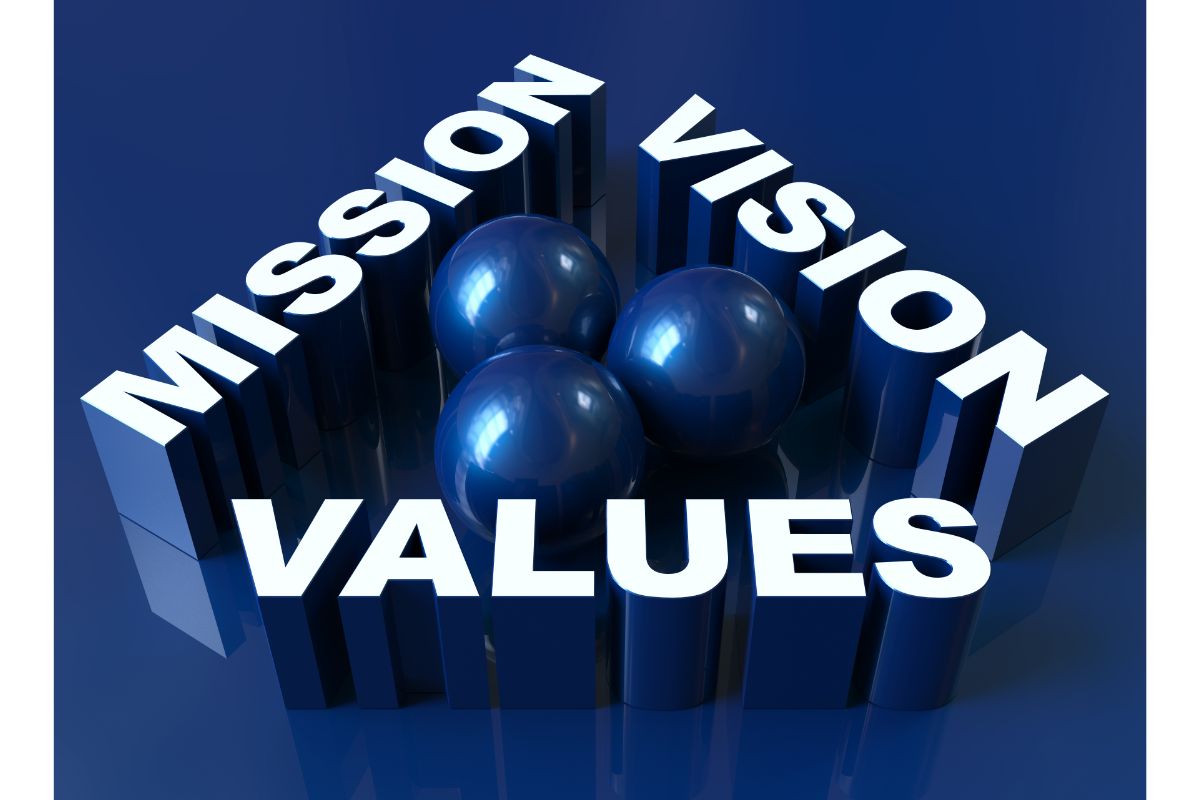Blog
The Problem with Vision Statements
In both my professional work, and as a college professor in the School of Business where I teach, I often help individuals and organizations get clarity around matters that pertain to culture. I help clients work on getting clear on things like their governing values, the personal or corporate mission statement, perhaps their vision statement, and other matters of a similar nature.
Sometimes I am asked what the difference is between a corporate mission statement and a vision statement. Easy.
The idea of a mission suggests a large scale project that sets direction. Conversely, a vision is more of a desired future state – an end-goal. A mission is more about the journey; a vision is more about the destination. I don’t have strong feelings one way or another if an organization (or an individual for that matter) works on one or the other or both. A mission statement and a vision statement – either one or both – enables an individual or an organization to get on track and focus on what matters most.
This past week I was working with a major high-tech firm – a Fortune 100 company, in one of their campuses back east. Essentially I was helping them figure out their vision for the future and how to best go about attaining it. The processes I put them through were grueling. We were in a very large conference room doing the heavy lifting. That conference room was subleased from another firm. That other firm, whose name I do not recall, had their own Vision Statement plastered all over one of the walls in bright red letters. It read as follows:
“We will be the safest, most reliable, innovative, cost-effective and secure transmission company while respecting the environment.”
What do you think may be wrong or misplaced about that Vision Statement? If you were hired as a management consultant, what might you advise the executive team?
Here are my thoughts: the vision statement is fraught with problems. The main problem is that it tries to be too much. Analyze the wording. They don’t merely want to be a safe transmission company, they want to be the safest. Second to none. That would take an enormous commitment to achieve such an accolade.
But wait, there’s more. They also want to be the most reliable transmission company. I’m not sure how they would define “most reliable,” and I’m not sure they even know. After all, how would they know they are the most reliable? Most reliable in what sense? In on-time deliverables? In terms of fewest defects?
Are we done yet? Nope; this is one doozy of a vision statement. This organization wants to be the most innovative transmission company. Really? Most safe, most reliable, and most innovative? Wow! That’s a lot of “mosts.” (I am aware that’s not really a word). Yet they are far from finished.
They also want to be the most cost-effective transmission company. How is that measured? Do they even know? Maybe they do. In fact, that’s wonderful if they do. But now they are juggling four different balls. That’s four distinct areas of focus. Not an easy task, for any organization.
And yet, to add to the pile, they want to be, in addition to the most safe, most reliable, most innovative, and most cost-effective, the most secure transmission company. Again, as with being the most cost-effective, what does being the most secure mean? How would it be measured? Does it mean financially secure (as in financially stable)? Does it mean their people are confident? Does it mean they have set up systems to prevent a hostile takeover?
Yet now it seems to becoming a parody, as they added one more straw to the camel’s back. They insist on respecting the environment. Hopefully they have some idea of what that actually entails.
But if I were advising the executive team, I would urge them to consider the value of focusing on one or two things, not a half-dozen things. I seriously doubt they are very effective at any of them at this time. There’s only so much energy and focus one group of people can exert at one time. Trying to be number 1 in five of them (safety, reliability, innovation, cost-effective, secure, and environmentally sensitive) strikes me as a recipe for failure. It would be much more sensible if the company took on the task of becoming number 1 at one of them, say, safety, and only after they attained the levels of safety that put them at the top of the heap, to then focus on becoming number 1 in, say, reliability (while maintaining the performance levels that took them to the top of their industry in safety). And then repeating the process, pursuing new heights only after they achieve major victories that then become the norm.
There is great wisdom in focus. Keep that in mind as you chart your own course for excellence and achievement.






